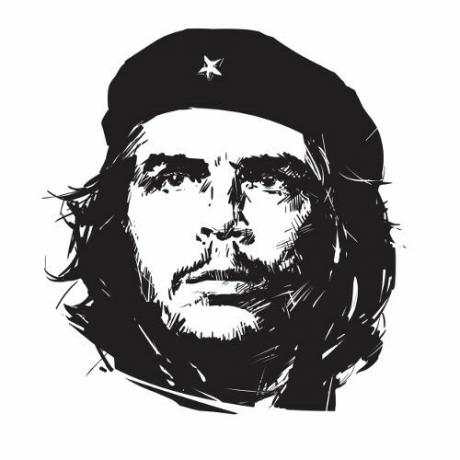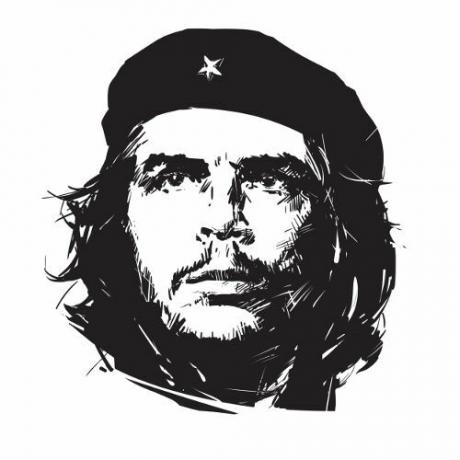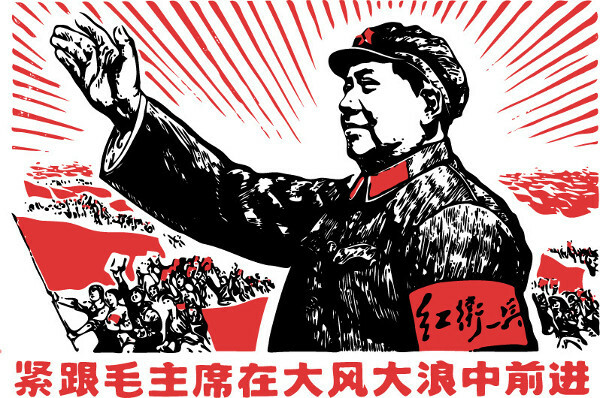THE Cuban revolution it was a revolutionary process that took place in Cuba, an island located in the Caribbean, in 1959. This process was led by a guerrilla movement that operated from a remote region of the island called Sierra Maestra and was led by Fidel Castro and Ernesto “Che” Guevara. The Cuban guerrillas, who at first led a nationalist revolutionary movement, were responsible for overthrowing the dictatorship of Fulgencio Batista.
Also access:Understand the story of one of the most defining conflicts in the history of the 20th century
Summary
The Cuban Revolution was led by Fidel Castro, leader of a guerrilla installed inside Cuban territory. The guerrillas led by Fidel sought to overthrow the dictatorship of Fulgencio Batista, installed in the country since 1952 through a military coup. After comings and goings, the movement settled in the Sierra Maestra and carried out attacks, which resulted in the overthrow of the Cuban government.
The new Cuban government that was established had Fidel Castro as its big name and carried out a series of changes in the country, which attracted the attention of the United States. The dissatisfied Americans broke relations with Cuba and tried to overthrow the Cuban government in 1961. The break in relations with the US resulted in the Cubans' alliance with the Soviet Union.
Cuban Revolution Leaders

Argentine revolutionary Ernesto “Che” Guevara was one of the great names of the Cuban Revolution.*
The Cuban Revolution had the great name FidelCastro, but other important names of this revolution were RaulCastro (Fidel's brother), Ernesto “Che” Guevara (the great name of the revolutionary struggle in Latin America) and camiloCienfuegos.
Background
Until the end of the 19th century, Cuba had been a Spanish colony, and its independence it was conquered in 1898 with the intervention of the United States in the Caribbean country. The end of Spanish colonization did not necessarily mean the end of the exploitation of Cuba. The intervention of the USA made the country pass to the radius of North American influence.
Cuba has become practically a backyard of the United States, and the influence of American companies has grown considerably throughout the 20th century. The symbol of the influence of the United States was the Platt Amendment, a treaty in which Cuba accepted that the United States intervened in the country whenever deemed necessary.
The Platt Amendment also stipulated that US naval bases would be developed in the country and that Cuba would sell or lease land so that the United States could exploit coal. In this context, Cuba, in the first half of the 20th century, developed in the shadow of American interests and, thus, its governments functioned to serve those interests.
In the context of the Cuban Revolution, the Caribbean country was ruled by Fulgencio Batista, a dictator who maintained an extremely corrupt government. Fulgencio took power in Cuba with a coup carried out on March 10, 1952 against the then president, Carlos Prío Socarrás.
Fulgencio Batista maintained a military dictatorship by persecuting his opponents, implementing censorship and governing to serve the interests of the United States. The rise to power of Fulgencio Batista was largely responsible for initiating a revolutionary opposition movement.
At that moment, Fidel Castro emerged as the revolutionary leader in Cuba. The Cuban revolutionary movement that emerged in this context, as evidenced by historians, was not a movement with a socialist or communist bias. It was a strictly movement nationalist to overthrow Fulgencio Batista and end Cuba's dependence on the United States.
Also access:Discover the history of the war that divided the Koreas
Cuban revolution

Fidel Castro was the great leader of the Cuban Revolution and led this process from 1953 to 1959, later becoming the ruler of Cuba.**
The starting point for the Cuban Revolution was theattack against the Qmoncada barrackson July 26, 1953. This barracks of the Cuban army was an arsenal of weapons, and the attack took place by a guerrilla led by Fidel Castro and made up of just over a hundred men.
Fidel Castro hoped that the attack on the barracks could be the beginning of a national mobilization against Fulgencio Batista. The movement, however, failed, and many of the guerrillas who had fought alongside Fidel Castro were killed or imprisoned. Fidel and Raul Castro were arrested, and Fidel was sentenced to 15 years in prison.
Two years later, however, Fidel Castro and several other political prisoners were released by Fulgencio Batista's government. Fidel and a group of followers went into exile in Mexico and there they organized a new movement to overthrow the ongoing dictatorship in Cuba. During this period in Mexico, Fidel met Ernesto “Che” Guevara, an Argentine revolutionary who decided to join the Cuban struggle.
In Mexico, Fidel Castro and his followers created the “July 26th Movement” in honor of the attack carried out against the Moncada Barracks in 1953. Once Fidel's revolutionary movement reorganized in Mexico, preparations were made for them to return to Cuba.
Do not stop now... There's more after the advertising ;)
Cuban revolutionaries returned to Cuba on a yacht, but were greeted by the Cuban army with a heavy attack. Defeated in this attack, they hid in the region of Sierra Maestra and from there, again, they went to reorganize the guerrillas with the aim of overthrowing Fulgencio Batista.
Between 1956 and 1959, Cuban revolutionaries fought against the armies of Fulgencio Batista. Little by little, they imposed defeats on the government and gained the support of both the rural and urban population. Fulgencio's defeat, however, was sudden, as it was only in 1958 that the guerrillas managed to conquer a city of more than a thousand inhabitants.|1|.
Fulgencio Batista's downfall officially took place on January 1, 1959, when he fled Cuba. The defeat is explained by historian Eric Hobsbawm as follows:
Fidel won because the Batista regime was fragile, had no real support, other than the one motivated by the convenience and self-interest, and was led by a man made indolent for a long time. corruption. It collapsed as the opposition of all political classes, from the democratic bourgeoisie to the communists, united against him, and the dictator's own agents, soldiers, police and torturers concluded that his time had passed. exhausted|2|.
The attrition of the government and the actions of the Cuban guerrillas were largely responsible for Batista's downfall. The date that marks the victory of the guerrillas is January 1, 1959, the day Fulgencio Batista ran away. Fidel Castro, the great leader of this revolution, arrived in Havana on January 8th.
The new government provisionally established Manuel Urrutia as president and Fidel Castro as prime minister. As of 1959, several reforms began to be implemented in the country. The changes promoted in the field of the economy deeply displeased the United States and caused the rupture of relations between Cuba and the Americans.
The new Cuban government has tried to diversify the country's economy to reduce dependence on sugar and also promote some industrialization. Both failed. In addition, the Cuban government promoted agrarian reform and nationalized the exploitation of resources and companies installed in the country.
With these actions, the United States openly opposed the Cuban government and started to organize measures to sabotage Cuba. One of the best-known actions organized by the Americans was the attack carried out in 1961: the Invasion of the Bay of Pigs. On that occasion, CIA-financed Cuban dissidents tried to invade the country.
US opposition to the measures taken by Cuba is best understood within the context of the Cold War, a political and ideological conflict that divided the world into two blocs: one capitalist-oriented, led by the United States, and the other socialist-oriented, led by the Union Soviet.
The measures taken by Cuba were displeasing to the United States and, therefore, the Cuban revolutionaries began to be accused of being communists, despite Fidel Castro's denials of being ideologically aligned with the communism. The actions of the United States against Cuba paved the way for the Caribbean island to associate itself with the Soviet Union, the great enemy of the Americans.
Between 1960 and 1961, the United States took a series of measures to stifle the Cuban economy. Looking for an alternative, the Cubans approached the Soviets. In January 1961, the United States formally broke diplomatic relationswith Cuba. Regarding the ideological character of this revolution and how a non-communist movement approached the Soviet Union, Eric Hobasbawm says:
Although radicals, neither Fidel Castro nor any of his comrades were Communists, nor (with two exceptions) ever claimed to have Marxist sympathies of any kind. In fact, the Cuban Communist Party, […], was notably unsympathetic to Fidel, until some of its parts joined him, rather belatedly, in his campaign […].
However, everything pushed the fidelist movement towards communism, from revolutionary social ideology […] to anti-communism in love with the US in the 1950s of Senator McCarthy, which automatically inclined the Latino anti-imperialist rebels to look at Marx more kindness. The global Cold War did the rest. If the new regime antagonized the US, which it almost certainly would, if nothing threatened the American investments, he could count on the almost certain guarantee and support of the greatest antagonist of the USA|3|.
Because of Cuba's rapprochement with the Soviet Union because of American attempts to overthrow the Cuban government, Cuba embraced communism as its government's ideology. Cuba's rapprochement with the Soviet Union resulted, in 1962, in one of the most tense and delicate chapters in the history of Cuba. Cold War: a Missile Crisis, in Cuba.
Fidel Castro, deceased in 2016, was prime minister of Cuba from 1959 to 1976. From 1976 to 2008, he was the country's president, being succeeded by his brother, Raúl Castro.
|1| HOBSBAWM, Eric. Age of Extremes: the brief 20th century 1914-1991. São Paulo: Companhia das Letras, 1995, p. 426.
|2| Idem, p. 426.
|3| Idem, p. 427.
*Image credits: Uncle Leo and Shutterstock
**Image credits: emkaplin and Shutterstock
By Daniel Neves
Graduated in History


